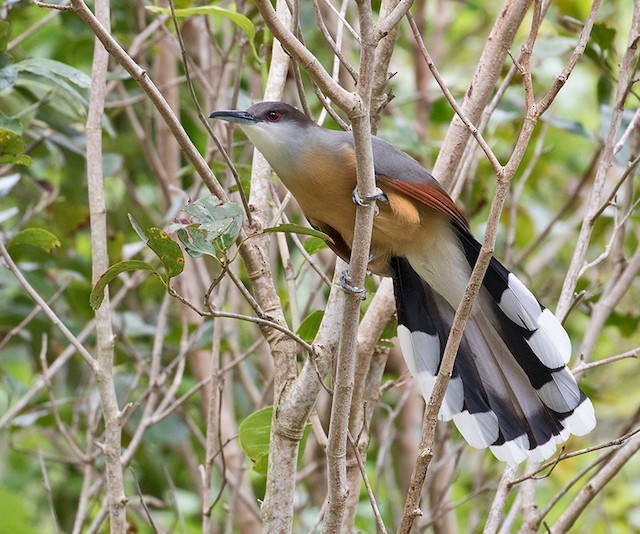Birdfinding.info ⇒ A secretive and retiring species that occurs at all of the frequently visited forest sites on Jamaica, but can be difficult to find. It seems to be most consistently observed at San San, Stewart Town, Green Castle Estate (Robin’s Bay), Ecclesdown Road, and Marshall’s Pen, but with effort or luck it can also be found anywhere in the Blue Mountains and Cockpit Country.
Jamaican Lizard-Cuckoo
Coccyzus vetula
Endemic to Jamaica, where it is a widespread but inconspicuous resident of humid woodlands at all elevations the length of the island.
Identification
A large, lanky, long-tailed, long-billed cuckoo. Unmistakable if seen well, but under some conditions could be confused with two other cuckoos on Jamaica: by size, with Chestnut-bellied, and by coloration, with Mangrove.
Upperparts are mostly gray-brown (warm brown on the cap and nape), with a vivid rufous patch in the primaries. The upperside of the tail has a white tip and black subterminal band.
Underparts are mostly cinnamon-buff, with a white or pale-gray throat and mostly white undertail. The orbital skin is red.
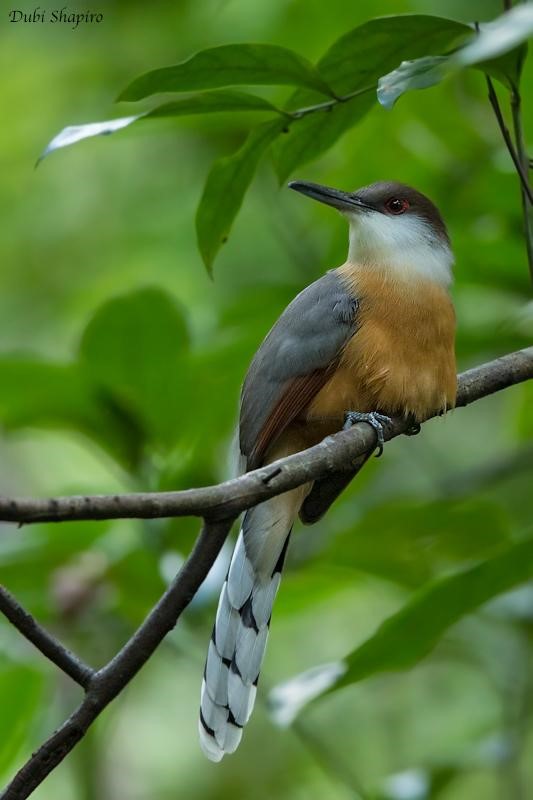
Jamaican Lizard-Cuckoo, showing nearly all-white undertail. (San San, Jamaica; February 23, 2018.) © Dubi Shapiro
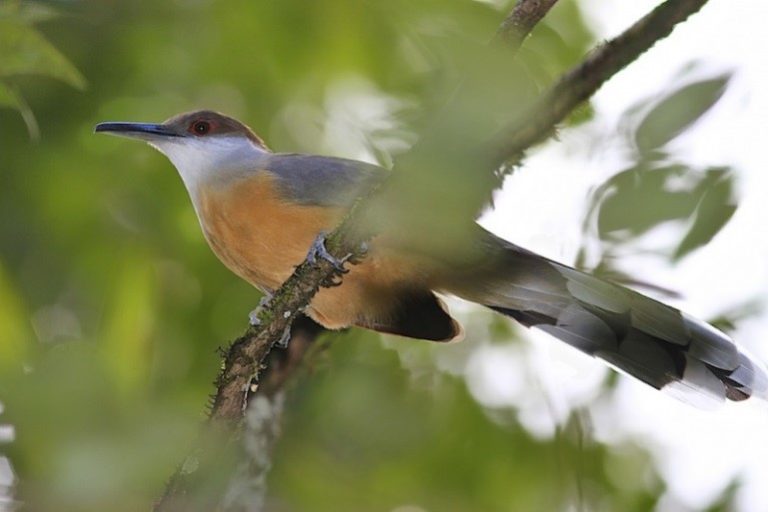
Jamaican Lizard-Cuckoo. (Arcadia, Jamaica; November 2010.) © Stanley Jones
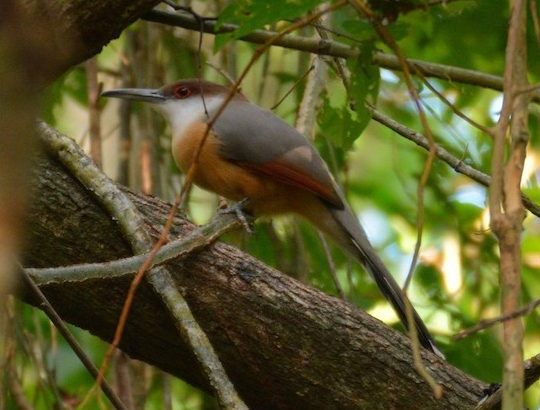
Jamaican Lizard-Cuckoo. (Green Castle Estate, Jamaica; March 11, 2016.) © Doug Overacker
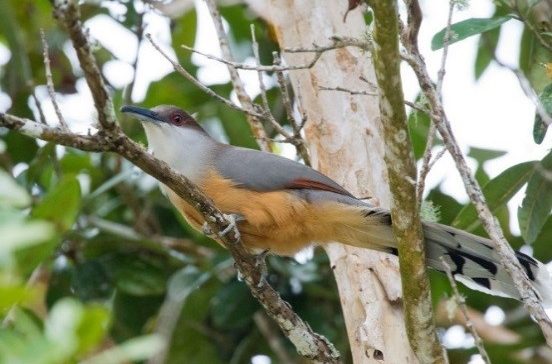
Jamaican Lizard-Cuckoo. (Ecclesdown Road, Jamaica; February 2014.) © Tom Davis
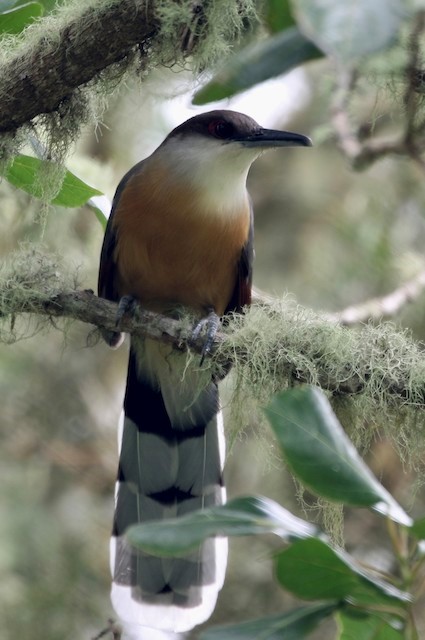
Jamaican Lizard-Cuckoo. (Hardwar Gap, Jamaica; January 29, 2019.) © Roger Woodruff

Jamaican Lizard-Cuckoo. (Jamaica; February 2010.) © Mike Weedon
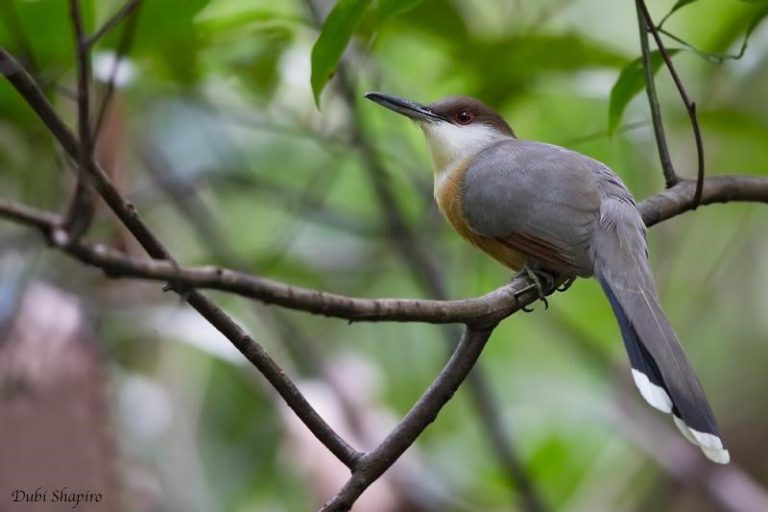
Jamaican Lizard-Cuckoo. (San San, Jamaica; February 23, 2018.) © Dubi Shapiro

Jamaican Lizard-Cuckoo, showing uppertail’s white tip and black subterminal band. (Hardwar Gap, Jamaica; January 29, 2019.) © Michael Woodruff

Jamaican Lizard-Cuckoo. (April 21, 2007.) © Dominic Sherony

Jamaican Lizard-Cuckoo. (Jamaica; February 2010.) © Mike Weedon
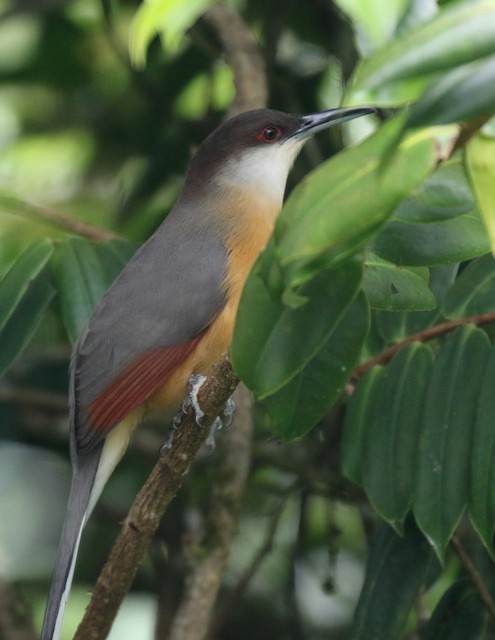
Jamaican Lizard-Cuckoo. (Hardwar Gap, Jamaica; January 29, 2019.) © Michael Woodruff
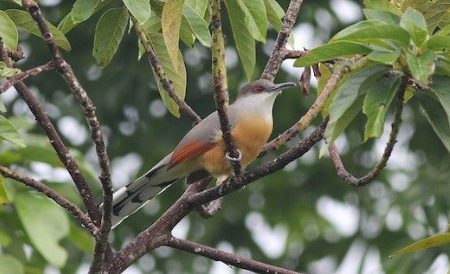
Jamaican Lizard-Cuckoo. (Vinery, Jamaica; March 11, 2016.) © Eric Hynes
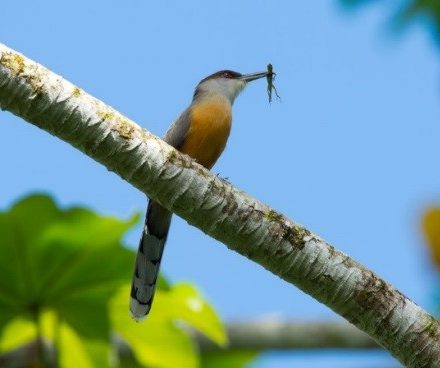
Jamaican Lizard-Cuckoo, with lizard. (Ecclesdown Road, Jamaica; February 2014.) © Tom Davis

Jamaican Lizard-Cuckoo, showing uppertail’s white tip and black subterminal band. (Jamaica; April 30, 2013.) © William Price
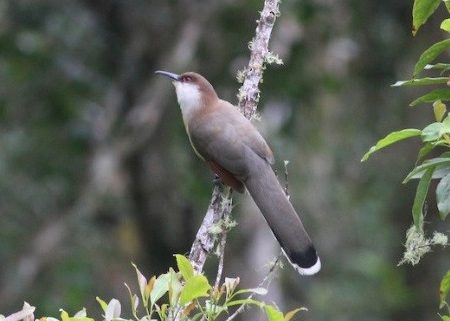
Jamaican Lizard-Cuckoo, showing uppertail’s white tip and black subterminal band. (Silver Hill Gap, Jamaica; March 10, 2017.) © Michael McCloy

Jamaican Lizard-Cuckoo, with tail partly spread, showing that the uppertail’s white tip and black subterminal band extends to the tips of the shorter outer retrices, which are not always visible from above. (Vinery, Jamaica; March 11, 2016.) © Marbry Hopkins
Voice. Call is a staccato cackle that rises in volume, then subsides:
Cf. Chestnut-bellied Cuckoo. The somewhat commoner Chestnut-bellied Cuckoo is even larger than the Jamaican Lizard-Cuckoo, and differs in having a heavier, more downcurved bill, creamy-white throat and breast, chestnut belly, and mixed black-and-white undertail. Chestnut-bellied also lacks the lizard-cuckoo’s red orbital skin and coppery wing patch. Chestnut-bellied’s tail always appears broad, whereas the lizard-cuckoo usually holds its tail folded—straight and narrow—but it sometimes fans its tail as well.
Cf. Mangrove Cuckoo. Mangrove Cuckoo and Jamaican Lizard-Cuckoo are similar in their overall coloration, but Mangrove’s underparts are yellower and lack the lizard-cuckoo’s clear color contrast between throat and breast. Mangrove is somewhat smaller than the lizard-cuckoo and its bill is much shorter, decurved, and bicolored. Mangrove also lacks the lizard-cuckoo’s red orbital skin and coppery wing patch.
Notes
Monotypic species. The lizard-cuckoos were formerly placed in their own genus, Saurothera.
References
eBird. 2018. eBird: An online database of bird distribution and abundance. Cornell Lab of Ornithology, Ithaca, N.Y. http://www.ebird.org. (Accessed December 25, 2018.)
Erritzøe, J., C.F. Mann, F.P. Brammer, and R.A. Fuller. 2012. Cuckoos of the World. Christopher Helm, London.
Haynes-Sutton, A., A. Downer, R. Sutton, and Y.-J. Rey-Millet. 2009. A Photographic Guide to the Birds of Jamaica. Princeton University Press, Princeton, N.J.
Payne, R. 2017. Jamaican Lizard-cuckoo (Coccyzus vetula). In Handbook of the Birds of the World Alive (J. del Hoyo, A. Elliott, J. Sargatal, D.A. Christie, and E. de Juana, eds.). Lynx Edicions, Barcelona. https://www.hbw.com/node/54900. (Accessed November 25, 2017).
Raffaele, H., J. Wiley, O. Garrido, A. Keith, and J. Raffaele. 1998. A Guide to the Birds of the West Indies. Princeton University Press, Princeton, N.J.
